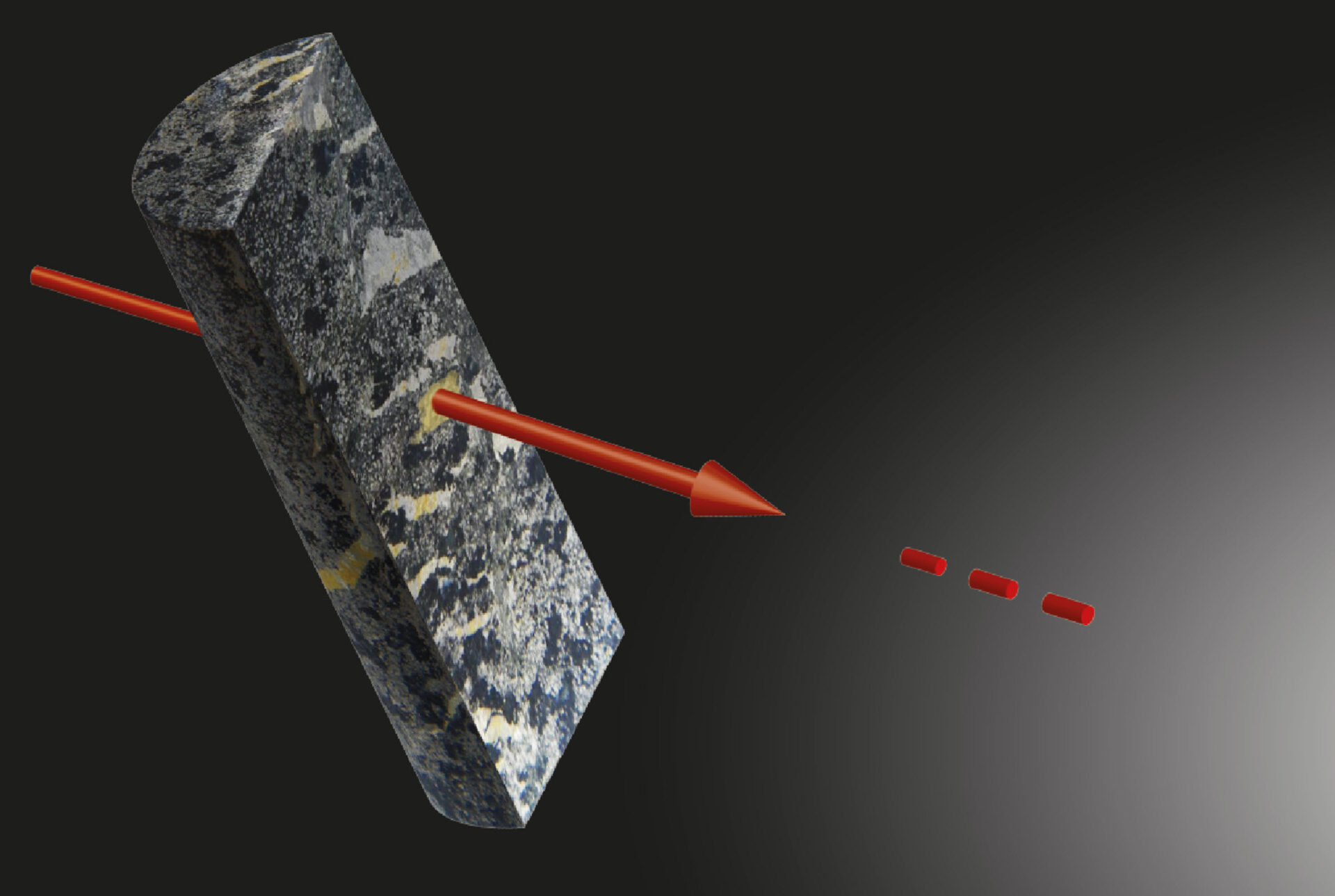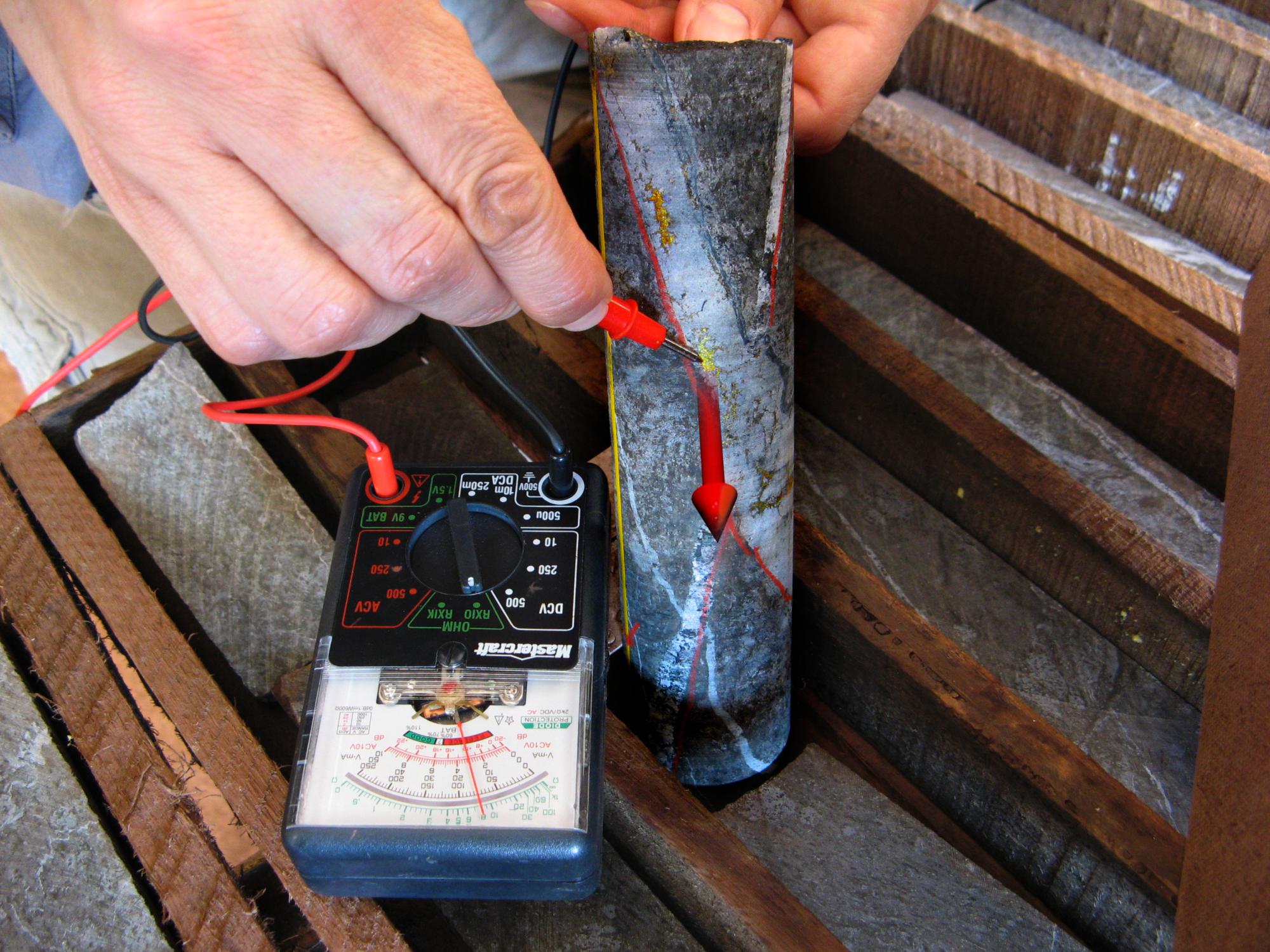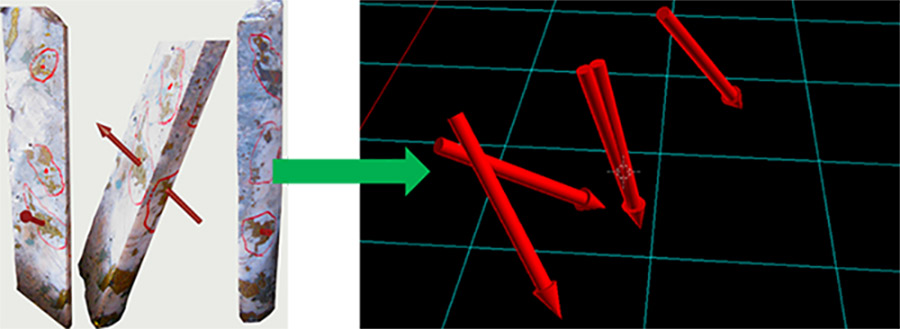Within this context, we investigate the assemblage of structural features present in the mineral body under evaluation, and we segment them into two main groups: mineralization-related structural features, which are directly associated to the metals of interest; and architectural-related structural features, which are unrelated to the formation or modification of a mineral body.
We understand that vectors have a strict definition, combining direction, magnitude and sense. In structural geology, this can be derived into a notation that allows us to be more effective in targeting. Most structural features can be described as a plane or a line (lineation). In our experience, lineation is by far the most relevant geometrical, primitive factor controlling mineral bodies. Although not all lineations are true vectors in its strictest sense, the ones that aren’t can be described as having direction, magnitude represented as unit vector, and sense directed down – a vector.
The spatial orientation of the lines characterized as mineralization-related structural features – the mineralization-related vectors – can be used as geometrical indicators of grade continuity, and in some instances, as extensions of mineral bodies . We call this process Structural Vectoring, and it connects mineralization-related planes and vectors to drilling design and mineral body geometry. Therefore, Structural Vectoring provides the basis for an improved drilling design and mineral discovery. We note that each structural feature is built by a particular mineral or a cluster of minerals. Sequencing structural features along with and connected to the mineral assemblage sequence augments significantly our understanding of the mineral target and it must be carried out concurrently.
As such, Structural Vectoring empowers geologists by building a better and faster understanding of the target’s geo-architecture under investigation. It augments predictability, accuracy and precision of exploration tasks, and it saves time and money.


